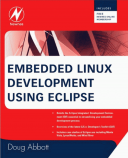Книга: Embedded Linux development using Eclipse
1.4.2 Workspaces
1.4.2 Workspaces
The various tools plugged in to the Eclipse Platform operate on regular files in your workspace. The workspace consists of one or more top-level projects, where each project maps to a corresponding directory in the file system. The different projects in a workspace may map to different file system directories or drives, although by default, all projects map to sibling subdirectories of a single workspace directory.
It is also possible to have multiple workspaces. You specify a workspace when starting Eclipse. From within Eclipse you can also change workspaces, which causes Eclipse to restart itself.
A project contains files that you create and modify. In addition to being accessible from Eclipse, all files in the workspace are directly accessible to the standard programs and tools provided by the underlying operating system. Tools integrated with the Platform are provided with APIs for dealing with workspace resources (the collective term for projects, files, and folders). So-called adaptable objects represent workspace resources so that other parties can extend their behavior.
In a large project, the Linux kernel, for example, tools like compilers and link checkers must apply a coordinated analysis and transformation of thousands of separate files. To this end the platform provides an incremental project builder framework; the input to an incremental build is a resource tree delta capturing the net resource differences since the last build. The platform allows several different incremental project builders to be registered on the same project and provides ways to trigger project and workspace-wide builds. An optional workspace auto-build feature automatically triggers the necessary builds after each resource modification operation (or batch of operations).




